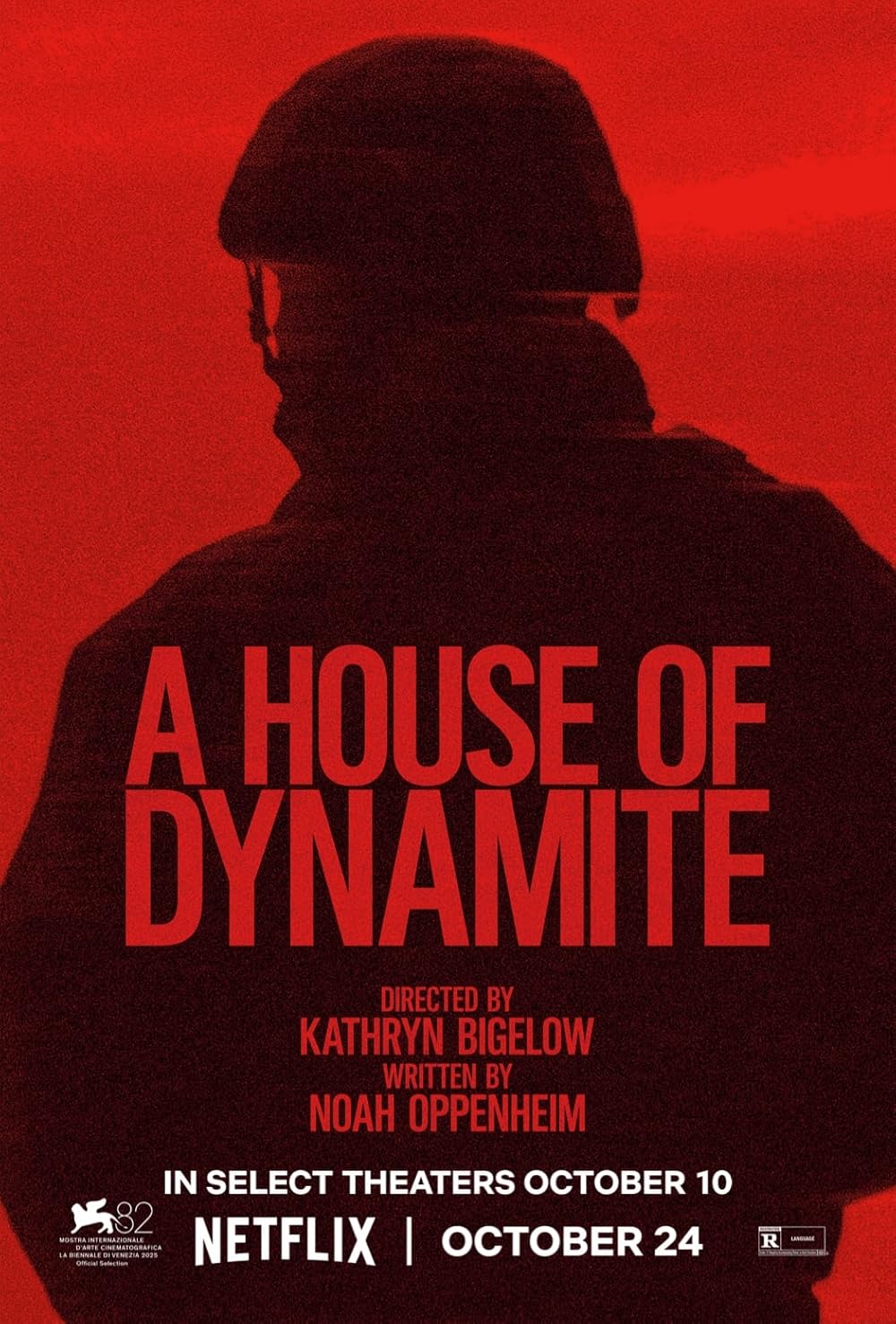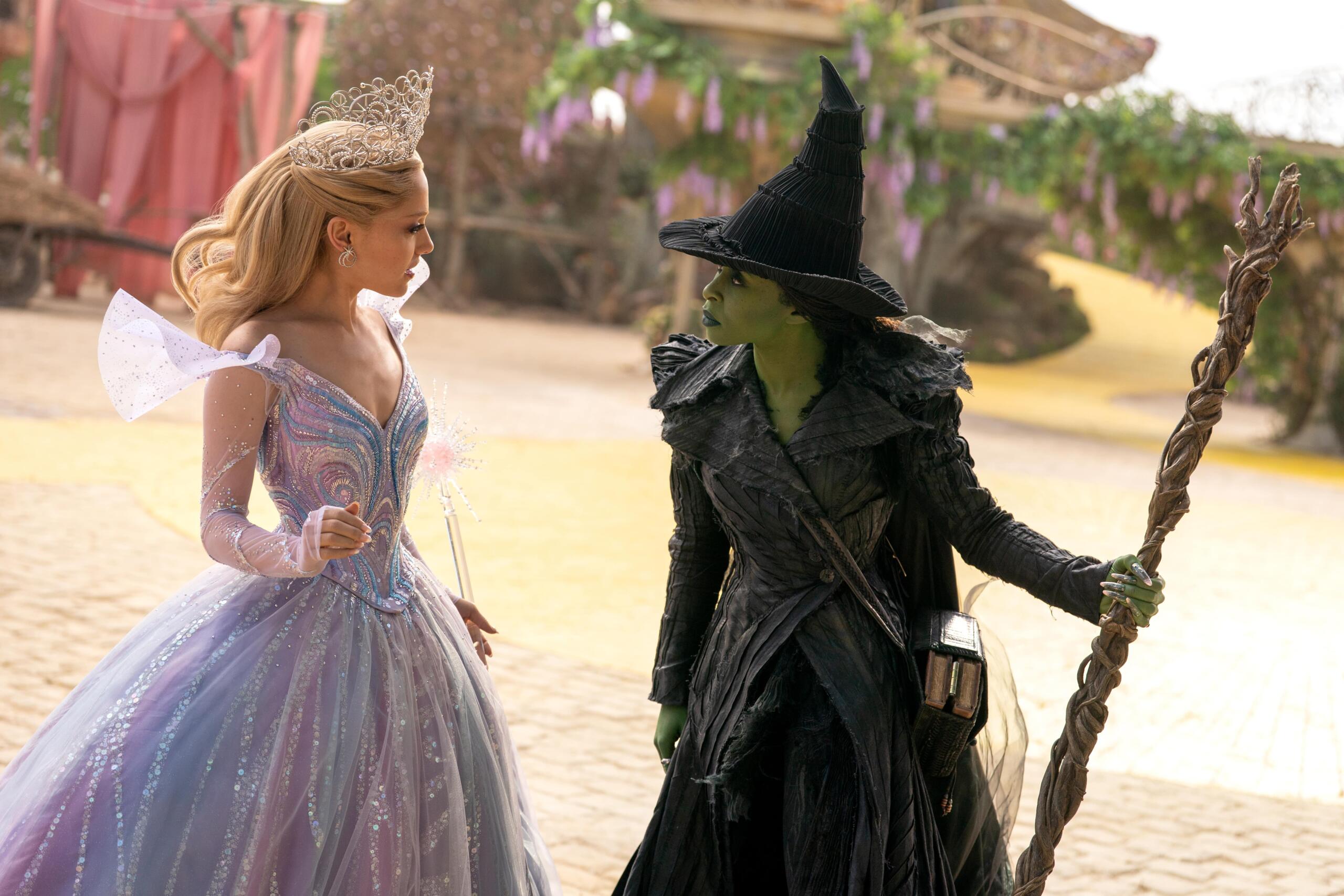ASHEVILLE, N.C. (828newsNOW) — Kathryn Bigelow is back. The filmmaker behind war thrillers like “The Hurt Locker” and “Zero Dark Thirty” and cult action flicks including “Near Dark” and “Point Break” has returned to the director’s chair for “A House of Dynamite,” her first movie in eight years.
“A HOUSE OF DYNAMITE” (2025, 113 min., directed by Kathryn Bigelow)
“A House of Dynamite” is a nuclear war thriller. The movie stars a massive ensemble cast – including, but not limited to, Rebecca Ferguson, Tracy Letts, Anthony Ramos, Greta Lee, Jonah Hauer-King, Kaitlyn Dever and Idris Elba – and utilizes Bigelow’s trademark understanding of political procedure to craft the most modern of her political nightmares yet. In “A House of Dynamite,” an unidentified, nigh-unstoppable nuclear warhead is headed toward the United States and its defenders have only 18 minutes to stop it.
In many ways, the film feels like familiar ground for the auteur. Bigelow’s style is defined by shooting uniformed men and women in claustrophobic close-up, bringing her trademark tension-ratcheting shaky-cam in spades to “A House of Dynamite.” Even after nearly a decade spent on hiatus, Bigelow hasn’t lost an inch of skill behind the camera.
A political thriller without politics

However, even if the director hasn’t changed, the political landscape of the United States is drastically different than it was a decade ago. Historically, Bigelow characters are nuanced, morally grey servants of a murky national agenda. Today, that national agenda is fractured, polarized to black-and-white and defined by cults of personality.
“A House of Dynamite” is set more or less contemporaneously, but the chaotic headlines of modern politics are nowhere to be found. “The Hurt Locker” was defined by the Bush era in 2008 and “Zero Dark Thirty” by the Obama administration in 2012, but “A House of Dynamite” is entirely divorced from the national politics of the 2020s, replacing Trump, Biden and MAGA with an ambiguously affiliated Idris Elba.
This is not to say that films shouldn’t stray from contemporary politics to meet their dramatic ends. Fictional movie presidents have a long and storied precedent at the movies. The problem is that the character of the United States has fundamentally changed over the last 12 years, making the version of our nation in Bigelow’s film feel further afield from reality than it was meant to.
From its military acronym-studded dialogue to its careful set-up of the chain of command, “A House of Dynamite” pledges allegiance to the flag of realism, but its lack of political specificity may as well be a flag burning. Stripping away the context of geopolitics makes the movie more like a Model UN debate than a premonition of the future. Even “Dr. Strangelove,” the defining nuclear satire of the 20th century, made a point to gesture at where the United States stood with its enemies and allies and its commentary was all the richer for it.
“A House of Dynamite” seems to have nothing to say but “nukes sure are bad, aren’t they?” For all its nervy, frayed-edge tension, the film feels deeply out of touch.
Script issue
At the very least, “A House of Dynamite” has a clever construction going for it. After the missile is launched in the opening prologue, the film is told in three cycles of the 18 minute countdown before the nuke lands, running back the clock at the end of each segment with a new group of characters. Screenwriter Noah Oppenheim balances that massive cast by focusing on a few key figures at a time, giving the story a wide scope but delivering it in digestible chunks.
In an odd but effective stroke of modernity, the unifying device between the characters clusters is a Zoom-like video call. Oppenheim injects tantalizing snippets of dialogue into the conference call like plot anchors. Each time the clock resets and the cast reshuffles, memorable lines serve as bookmarks, keeping the timeline of action straight for the audience as more of the story is filled in with each subsequent cycle.
However, after two rounds of watching the same beats from different angles, the cleverness factor begins to wear off. What begins riveting becomes repetitive, necessitating an explosive third act to bring home the boom. Unfortunately, the final cycle is far and away the weakest of the three.
Throughout the first two cycles, the Zoom square of the POTUS remains dark, with Elba occasionally chiming in but his face kept largely off-camera. By the time his point-of-view debuts in the third act, Elba is tasked with delivering a satisfying dramatic climax to the film, a feat neither his performance nor Oppenheim’s script is up for.
Elba is rarely bad in a movie, but he is far from good in “A House of Dynamite,” sapping any possible salvageable gravitas out of his sappy eleventh hour speeches. There are several eye roll-worthy moments in acts one and two – the most egregious of the entire film is perhaps when a Civil War reenactment of The Battle of Gettsyburg is sloppily contrasted with the film’s apocalyptic modern warfare scenario – but the conclusion of the final cycle is a big, red button of bad.
“A House of Dynamite” is propelled by propulsive filmmaking, Volker Bertelmann’s dynamic score and strong performances from most of the cast, with Gabriel Basso as the standout and amusingly awful accent work from Rebecca Ferguson as a memorable X factor. However, the film sputters with its lack of political guts, flames out with its dramatic repetition and explodes on impact in the third act. At least Bigelow is back as a cinematic commander-in-chief. Here’s hoping her next film comes along sooner than eight years.
Rating: 2/5
“A House of Dynamite” is now playing in select theaters and will be available on Netflix on Oct. 24.







